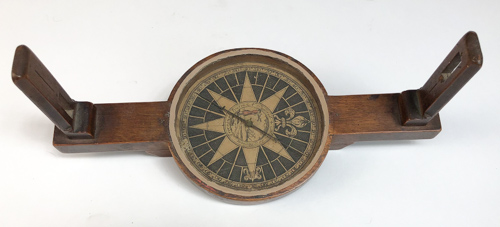eReference Library

Thomas Greenough Compass - Circa 1760 - Bud Uzes Collection
Useful Information - Early Compass & Transits
Vintage Compasses and transits are extremely collectible. Some are historically important. Others are works of industrial art. And there are just enough old instruments around to make the hunt challenging yet ultimately rewarding.
You can also find some helpful information about compasses and transits in Bud Uzes' Illustrated Price Guide to Antique Surveying Instruments and Books (published in 1980).
Early Survey Compasses
Surveying was an early necessity for colonial Americans, and almost all the surveying was done with a compass and chain. Many compasses were made out of wood with a paper compass card. Brass was more expensive, could be difficult to acquire, and there were not many craftsmen in America who had the requisite skill to produce a metal based surveying compass. By 1800, however, as brass became cheaper and the number of craftsmen increased, brass replaced wood as the compass of choice. Few if any wood compasses were made after 1825.
Brass compasses come in two flavors - plain and vernier (sometimes called nonius before 1900).
Wood surveying compass are a wonderful collectible. Wood compasses are hard to find - they are not nearly as durable as brass compasses. But they were made in sufficient quantity, especially in the Northeast, so it is possible to find a wood compass occassionally. The paper compass cards can be very artistic - and Paul Revere is thought to have printed some of them, including for the compass pictured above. Click here for a good look of the compass card.
Vernier Compasses were invented in the second half of the 18th century. The magnetic needle points in the direction of the magnetic north pole, which moves around in a predictable fashion. A Vernier compass has a means for setting off the amount of magnetic variation so that bearings can be based upon true north rather than the magnetic north (which is shifting constantly). Take a look at a rather unique approach to a vernier compass - circa 1815.
Early vernier compasses are relatively rare, and therefore worth more than plain compasses. Most large surveying compasses produced by the late 19th century were of the vernier variety.
Plain compasses rely solely on the magnetic needle for determining direction. Craftsmen started producing large surveying plain compasses made out of brass starting in about 1730. A highly skilled craftsman could produce a compass face that was a work of art (like the compass above). Compare this compass face to perhaps the oldest surviving large surveying brass compass - circa 1730 to 1740.
Plain compasses, especially eighteenth century plain compasses, oftentimes did not have levels on the arms. An expensive add-on no doubt, and perhaps considered unnecessary by some buyers. For example, while not having levels, the about compass had a sophisticated chain counter.
Railroad Compasses
In addition to the magnetic needle, a railroad compass has a graduated horizontal circle for the taking of angular measurements. Railroad compasses typically sell at a premium to plain and vernier compasses.
Here is a Gurley Railroad Compass, where you can see the mechanism underneath that allowed the surveyor to take horizontal measurements. Basically the surveyor would point the compass sights at the first location, lock one plate of the compass in place, and then rotate the rights to the second location. The surveyor could then determine the angular difference between the two locations very accurately. Click here to see Gurley Railroad Compass.
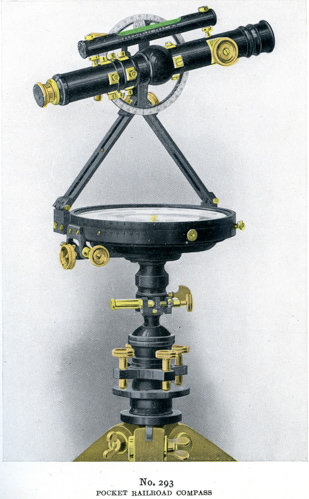
Gurley also made a smaller railroad compass, and put a telescope on it as well. A very desirable item - and hard to find.
Resources for Compass Collectors
You need two books if you are going to collect large surveying compasses made from 1700 to 1850 - Smart's "Makers of Surveying Instruments" and Bedini's "Early Scientific Instruments". You can download the digital versions of both books below (I scanned Smart's book myself, as the copyright has expired).
For compasses made after 1850, the best place to look at the individual instrument maker's catalogues (click here) or go to the surveyhistory.org website that has a list of compass makers.

Smart's "The Makers of Surveying Instruments in America Since 1700" is the Magnum Opus of the field. First published in 1962, Smart added a second volume with new information in 1967 (with the 1962 edition becoming Vol 1). So you can hunt down the 1962 vol 1 and 1967 vol 2, or Smart also sold a single book with both volumes combined in 1967. EXPENSIVE - at $300 to $400, if you are lucky enough to find it. But you need this book if you're going to buy early American compasses. I scanned my copy - word searchable, but 65MB file.
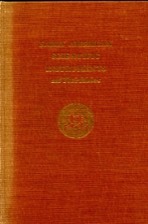
Bedini's "Early American Scientific Instruments" is a 184 page book published in 1964 with hardback and paper cover versions. Not as comprehensive as Smart's book, but with numerous high quality photos of compasses and some other instruments. Bedini's book has been preprinted, but typically the reprinters used much cheaper paper, and the pictures in the book lost a meaningful amount of detail. So download the pdf below, or if you want a hardcopy, buy the rather inexpensive original versions, either paperback (roughly $25) or hardback (roughly $50). I have some of these books if you need one.
Early & Basic Transits
Collecting Surveying Transits is a BLAST! Instrument makers produced an amazing number of transit varieties in rather small numbers. So you can enjoy searching for and occasionally finding different (and possibly unique) instruments for years.
The earliest transits (from 1831 to the early 1850s) were basically vernier compasses with a scope replacing the sight vanes and arms. From the early 1850s to the early 1860s , a number of instrument makers figured out ways to make transits for more useful and accurate (sometimes referred to as the pre-1862 Transits). After the early 1860s, instrument makers hit upon the popular version of the transit. They also figured out ways to add solar attachments (see the Solar Instrument webpage) or make the transit suitable for mine surveying (see the Mining Instrument webpage).
If you look thru the instrument maker catalogues, you will find names like Mountain Transit, Light Mountain Transit, Explorer's Transit, etc. Basic transit were somewhat big and heavy (think old 7lbs laptops). The makers found ways to make the instruments smaller and lighter over time (think 3lbs laptops of today), and offered these transits at elevated prices.
For those who are not hard core surveyors, the nomenclature can be a bit daunting. Fortunately, Bud Uzes created a handy dandy nomenclature chart for you.

William Young invented the American Surveying Transit in 1831 - this is apparently the first, or one of the first, transits that Young built.

Schmolz compass circa 1858. This is a unique design of surveyor's transit known as "Pre-1862 Surveyor's Transit" and is described in Robert Miller's article in Rittenhouse, Vol. 7, Issue 28, August 1993, titled "The First Surveyor's Transits, 1852-1862." This style has the standards attached to the lower horizontal plate instead of the upper. It was intended for retracing land boundaries rather than for engineering purposes.
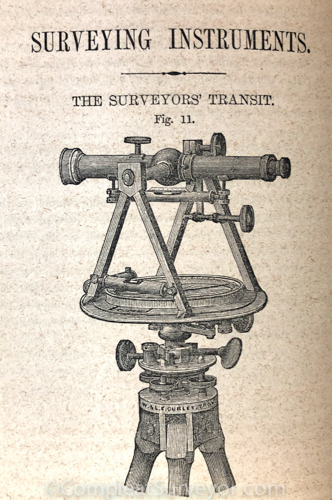
Gurley Transit from the 1856 Gurley Catalogue. Like the Schmolz to the left, this is a unique design of surveyor's transit known as "Pre-1862 Surveyor's Transit" and is described in Robert Miller's article in Rittenhouse, Vol. 7, Issue 28, August 1993, titled "The First Surveyor's Transits, 1852-1862." This style has the standards attached to the lower horizontal plate instead of the upper plate.
Gurley 1874 Surveyors Transit - $133. Note the straight legs on the standards - which Gurley changed circa 1885.
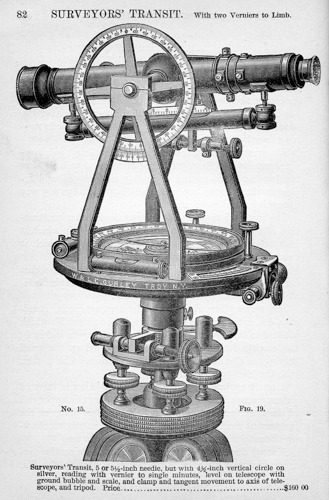
Gurley 1888 Surveyors Transit - $160 but with a few more bells and whistles. Note the bent standard legs and the spring loaded tangent screws under the compass place.
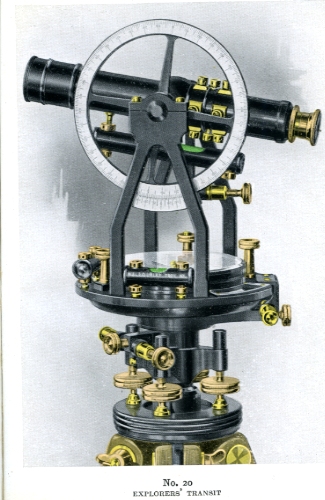
Gurley Explorer's Transit - 1910 Catalogue. Very Light and Small, and could fit inside a Gurley design and made suitcase.
Resources for Early & Basic Transit Collectors
I'm still pulling together resources. For now, the best place to look is in the individual maker catalogues, especially the Gurley, K&E, and Berger Catalogues.
© 2020 Russ Uzes/Contact Me
